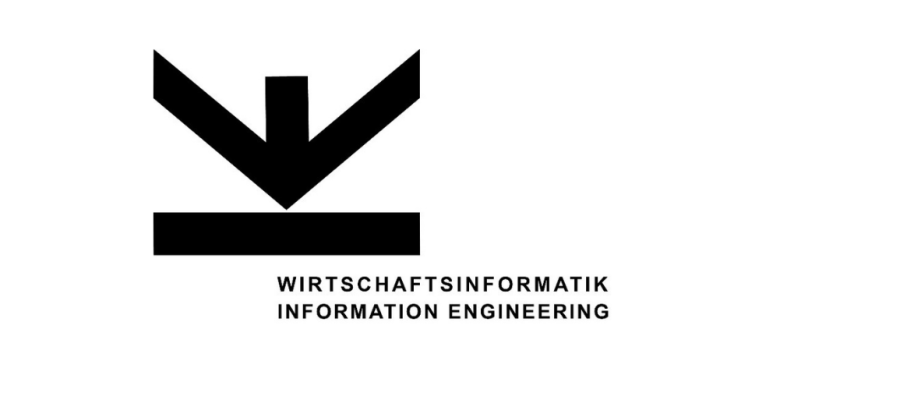In today's dynamic business environment, risk management in companies has become an indispensable prerequisite for success and stability
In today's dynamic business environment, risk management in companies has become an indispensable prerequisite for success and stability.
An effective risk assessment strategy enables companies to identify risks, analyze their likelihood of occurrence and potential impact, and take appropriate action to manage them.
However, risk management goes beyond the mere identification and assessment of potential risks. It supports companies in achieving comprehensive control and transparency in the corporate sector, including the monitoring of risks and the systematic recording and evaluation of opportunities and risks.
ISO 31000, an international standard for risk management, provides an effective framework to support this, always with the aim of ensuring a high level of transparency and control. This includes operational risks as well as strategic and even legal risks.
In this article, we will focus on the topic of risk management, its objectives and tasks, as well as the methods and tools that help companies to effectively manage potential and actual risks.
We will also look at how companies, supported by experts such as TrustedDecisions, can optimize their risk management processes to make better, more informed decisions.
What is risk management in a company?
Risk management in companies refers to the structured process of identifying, assessing and controlling risks. Every company has to deal with a variety of risks, such as financial, legal, operational and even strategic risks. It is therefore crucial to have an effective risk management system that identifies and assesses these risks, analyzes the potential impact and takes effective measures to mitigate them.
We define risks as any circumstance or situation that could have a negative impact on the company's objectives. These can be internal or external factors. Risk management aims to create transparency about these identified risks and helps the company to make informed decisions and act proactively.
An important aspect of risk management is the distinction between risk management and crisis management. While crisis management reacts to negative events that have already occurred, risk management aims to identify potential risks at an early stage and take measures to avoid or mitigate these risks.
Risk management is based on the systematic monitoring and assessment of risks in order to take appropriate measures to manage these risks. The objectives of risk management, namely the reduction of uncertainties and the maximization of opportunities, are always kept in focus.
The ISO 31000 standard defines risk management as "coordinated activities to manage and control an organization in relation to risks".
It enables companies to identify, analyze and assess risks in a structured and consistent manner. It also provides guidelines for implementing an effective risk management process within the organization.
The central objectives of risk management
The objectives of risk management are diverse and depend on the type of company, its size and its risk tolerance.
However, a number of key objectives can be identified that apply to all companies:
Ensuring control and transparency:
Risk management helps companies to maintain a clear overview of their risks and make informed decisions. It helps companies to identify and evaluate risks and assess their potential impact.
Compliance with legal and organizational requirements:
Companies have to comply with a large number of laws and regulations. Effective risk management helps to ensure compliance with these requirements and minimize potential legal risks. More and more often it is even mandatory. Two key laws can be singled out in this context: KonTraG The German Corporate Sector Supervision and Transparency Act (KonTraG), which was passed in 1998, requires stock corporations to implement a risk management system consisting of an early warning system, a suitable communication structure and the timely introduction of appropriate countermeasures.
Risk minimization and opportunity optimization:
The main objective of risk management is to minimize risks while maximizing the opportunities that may arise from these risks. By assessing risks and developing risk mitigation measures, companies can effectively manage their risks and optimize their opportunities at the same time.
Building trust with stakeholders:
Robust risk management creates trust among stakeholders, including investors, customers, employees and the general public. It shows that the company takes its risks seriously and actively takes measures to manage them.
In addition, effective risk management supports strategic planning by highlighting risks and opportunities and enabling management to make informed decisions. It also contributes to continuous improvement by highlighting shortcomings and areas for improvement. In this way, risk management makes a decisive contribution to the long-term success of the company.
Risk management tasks and processes
Effective risk management is a continuous and systematic process consisting of several steps:
Identifying and recording risks: The first step in the risk management process is to identify potential risks. This includes the identification of events or conditions that could have a negative impact on the company. Both internal and external risks can be taken into account.
- Assessment of risks: Once the risks have been identified, they are assessed. The potential impact of each risk and its probability of occurrence are assessed. The assessment of risks enables the company to set priorities and allocate resources effectively.
- Planning and implementation of measures: Based on the risk assessment, the company plans suitable risk mitigation measures. These can be, for example, preventive measures to avoid risks or reactive measures to minimize or transfer risks.
- Monitoring and control: The implemented measures must be continuously monitored and controlled to ensure their effectiveness. This also includes the ongoing monitoring and assessment of risks.
- Continuous adjustment and improvement: Risk management is a dynamic process that requires regular adjustments and improvements. Changes in the business environment or in the risk landscape may necessitate adjustments to risk management strategies and practices.
Through this structured approach, risk management helps to raise awareness of risks, improve understanding of the impact of risks and develop and implement risk management measures. It is an important part of strategic planning and helps to achieve the company's goals.
The ISO 31000 standard in detail
ISO 31000 is an internationally recognized standard for risk management that was developed to support companies in implementing an effective risk management process. This standard provides general guidelines and is therefore applicable to any type of risk and any type of organization.
The main purpose of ISO 31000 is to help organizations effectively identify, analyze, assess and manage their risks. This supports decision-making by helping to reduce uncertainty and achieve the organization's goals.
One of the key points of ISO 31000 is the emphasis on the continuous and proactive nature of risk management. This means that risk management is not just a one-off task or process, but requires a continuous effort that should be integrated into all aspects of the organization.
To put ISO 31000 into practice, organizations must apply a systematic approach to risk assessment that consists of various steps, including the identification and assessment of risks, the development and implementation of risk mitigation strategies and measures, and the continuous monitoring and review of the risk management process.
It is important to note that compliance with the requirements of ISO 31000 cannot be certified. Nevertheless, this standard is a valuable tool as it helps organizations to follow a best practice approach to risk management while meeting both legal requirements and stakeholder expectations.
Tools and techniques in risk management
There are a number of tools and techniques that can be used in risk management to facilitate the identification, assessment and management of risks. These can range from simple checklists and matrices to complex software solutions.
The selection of the appropriate tools and techniques depends on various factors, including the type and size of the company, the nature and complexity of the risks, and the specific requirements and objectives of risk management.
Some of the most common tools and techniques in risk management include:
- Risk assessment matrices: These are helpful in assessing risks by visualizing the probability of occurrence and the impact of each risk. They help companies to set priorities and focus on the most significant risks.
- Risk management software solutions: These tools enable the automated and systematic recording, assessment and management of risks. They can help to improve the efficiency of risk management by saving time, reducing errors and providing a real-time overview of the company's risk landscape.
- Scenario analysis and simulations: These techniques help companies understand the potential impact of different risk events and plan their risk mitigation strategies accordingly.
It is important to note that no tool or technique alone is sufficient. Instead, effective risk management requires the use of a combination of tools and techniques tailored to the specific needs and objectives of the organization.
Risk management in practice: case studies
In order to deepen the understanding and application of risk management, it is helpful to look at real application scenarios and case studies. These can show how risk management is implemented in different contexts and industries, and how it responds to specific challenges and situations.
An example could be a company in the manufacturing sector that is confronted with considerable operational risks. An important task of risk management in this context could be the identification and assessment of risks associated with the production line, such as machine breakdowns or delays in the supply chain. Based on this assessment, suitable measures could be planned and implemented to reduce and manage these risks.
Another example could be a financial services company that is confronted with a variety of financial and regulatory risks. Here, monitoring and controlling risks could be a high priority in order to ensure compliance with laws and regulations and minimize financial losses.
Regardless of the industry or the specific context, these examples show the central role that risk management plays in corporate management. They also show the variety of challenges risk managers face and the wide range of tools and techniques they can use to overcome these challenges.
Challenges and critical considerations
Despite its importance and benefits, implementing and maintaining effective risk management in practice can present a number of challenges. Some of these challenges could be, for example
Identification and assessment of risks:
- Although this is considered a fundamental step in risk management, identifying and assessing risks can be complex and difficult. Many risks are difficult to quantify and their impact and probability of occurrence can be difficult to predict.
Integration into business operations:
- Risk management should be integrated into all aspects of business operations, from strategic planning to day-to-day management. This requires close cooperation and coordination between different departments and stakeholders, which can be organizationally challenging.
Constant monitoring and adjustment:
- Risks are constantly changing due to changes in the business environment, technological advances and other factors. Companies must therefore be able to continuously monitor and adapt their risk management strategies and practices.
Companies can take a number of approaches to meet these challenges. This includes the implementation of a systematic risk management process, the use of tools and techniques to support risk identification and assessment, the training of employees in risk management and the promotion of a culture of risk awareness throughout the company. These approaches can help to improve the effectiveness of risk management and support the achievement of corporate objectives.
Conclusion and outlook
Risk management is an essential component of any successful business strategy. It enables companies to identify and assess potential risks and take appropriate measures to manage, minimize or avoid these risks. Effective risk management not only enables companies to better manage their operational risks, but also to make more informed, risk-aware decisions and achieve their strategic goals.
Ongoing monitoring and adjustment of risk management is equally important in order to be able to react to changes in the business environment or the risk landscape. In addition, compliance with standards such as ISO 31000 can help ensure that an organization's risk management complies with best practice and meets both legal and business requirements.
In the future, corporate risk management is likely to become more important as companies face increasingly complex and dynamic risks, from cyber threats to regulatory changes and environmental risks. Companies that are able to manage risk effectively and proactively are therefore better placed to overcome these challenges and secure their business success.




































